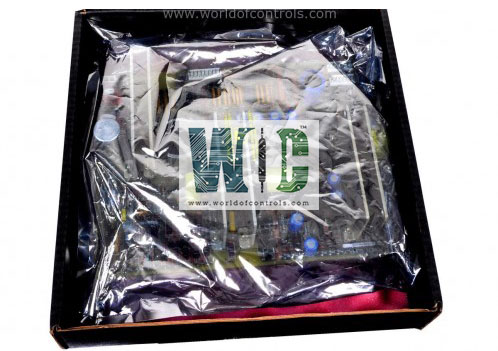SPECIFICATIONS
Part No.: IS230TRLYH2E
Manufacturer: General Electric
Country of Manufacture: United States of America (USA)
Size: 33.0 cm high x 17.8 cm wide
Technology: Surface mount
Temperature: -30 to 65oC
Product Type: Relay Output Board
Availability: In Stock
Series: Mark VIe
Functional Description
IS230TRLYH2E is a relay output board developed by GE. It is a part of Mark VIe control system. The board is equipped with a total of 12 plug-in magnetic relays. The board houses 12 plug-in magnetic relays, each designed to perform specific functions within the electrical system. Among the 12 relays, the first six relay circuits offer exceptional flexibility in configuration. These circuits can be configured through jumpers to provide either dry, Form-C contact outputs, or to drive external solenoids. This flexibility allows for customization based on the specific needs of the system or application.
Features
- Relays: 12 Form A Relays: The relay configuration on the board consists of 12 forms A relays, each designed to fulfill specific electrical functions within the system. This section provides an in-depth exploration of the characteristics and features associated with these relays.
- Power Distribution: The power distribution capability of these relays is tailored for 24V DC, presenting an optimal performance range for systems operating within this voltage specification. The relays are engineered to handle a maximum current load of 7A, ensuring efficient power distribution within the electrical network.
- Feedback Mechanism: In this specific relay setup, there is no explicitly mentioned feedback mechanism. The absence of a designated feedback system implies that these relays may not require or utilize specific feedback for their operation. This characteristic is important for understanding the relay's functionality and its role within the broader system.
- Relay Type: Isolated Contact Voltage Feedback: These relays employ an isolated contact voltage feedback system. This design choice means that the relays are configured to detect and respond to changes in voltage across isolated contacts. This isolated contact voltage feedback mechanism enhances precision and control over electrical signals, contributing to the reliability of the overall system.
- Redundancy Features: The relays on the board do not incorporate any redundancy features. The absence of redundancy implies that the operation of these relays relies solely on the primary relay components, without additional backup systems. Understanding the redundancy aspect is crucial for assessing the reliability and fault-tolerance of the relay configuration.
- Suppression: Solid-State Technology: The relays on this board utilize solid-state technology, a significant departure from traditional mechanical relays. This choice enhances the durability and reliability of the relays, making them well-suited for various applications. The relays are securely soldered onto the board, providing stability and minimizing the risk of malfunctions during operation.
- Terminals and Coil Drive Mechanism: Equipped with terminals, these relays support a coil drive mechanism. This mechanism can be configured for either voted TMR input or simplex input, offering flexibility in adapting to different system requirements. The inclusion of configurable coil drive mechanisms enhances the versatility and compatibility of the relays within diverse electrical setups.
- 24 Barrier Consideration: Notably, there is no 24 Barrier in this relay configuration. The absence of a 24 Barrier suggests the implementation of an alternative design or protection method within the system. Understanding this aspect is crucial for evaluating the safety and protective measures associated with the relay setup.
Jumpers (JP1 through JP12)
- Purpose: Jumpers JP1 through JP12 facilitate various functions and settings within the relay system.
- Contact Voltage Sensing: For applications requiring contact voltage sensing, jumpers can be inserted for selected relays. This enables the relays to detect voltage changes across their contacts, allowing for precise monitoring and control.
- Adjustment Process: To enable contact voltage sensing, carefully insert the jumpers into the designated slots corresponding to the desired relays. Ensure proper alignment and secure placement to guarantee optimal functionality.
- Application Flexibility: The availability of jumpers provides flexibility in configuring the relays to meet specific application requirements, enhancing versatility and adaptability.
Fuses (FU1 through FU12)
- Purpose: Fuses FU1 through FU12 play a crucial role in protecting the relays and associated circuitry from electrical faults and overloads.
- Power Circuit Protection: For relays 1 through 6, two fuses should be placed in each power circuit supplying those relays. This ensures adequate protection and prevents damage to the relays in the event of power surges or excessive current flow.
- Installation Guidelines: Carefully install the fuses into the designated slots corresponding to the power circuits supplying relays 1 through 6. Verify the correct fuse rating and compatibility with the circuit requirements to ensure effective protection.
- Safety Considerations: Proper fuse selection and installation are essential for maintaining the integrity and safety of the relay system. Follow manufacturer guidelines and adhere to industry standards to mitigate risks and ensure reliable operation.
The WOC team is always available to help you with your Mark VIe requirements. For more information, please contact WOC.
Frequently Asked Questions
What is IS230TRLYH2E?
It is a relay output board developed by GE under the Mark VIe series.
What are jumpers JP1 through JP12 used for on the board?
Jumpers JP1 through JP12 serve various functions within the relay system. They can be inserted to enable contact voltage sensing for selected relays, providing the ability to detect voltage changes across relay contacts.
How do I enable contact voltage sensing using the jumpers?
To enable contact voltage sensing, carefully insert the jumpers into the designated slots corresponding to the relays requiring this functionality. Ensure proper alignment and secure placement to ensure optimal performance.
Why are fuses FU1 through FU12 necessary on the board?
Fuses FU1 through FU12 are crucial for protecting the relays and associated circuitry from electrical faults and overloads. They provide essential protection to prevent damage to the relays in case of power surges or excessive current flow.
